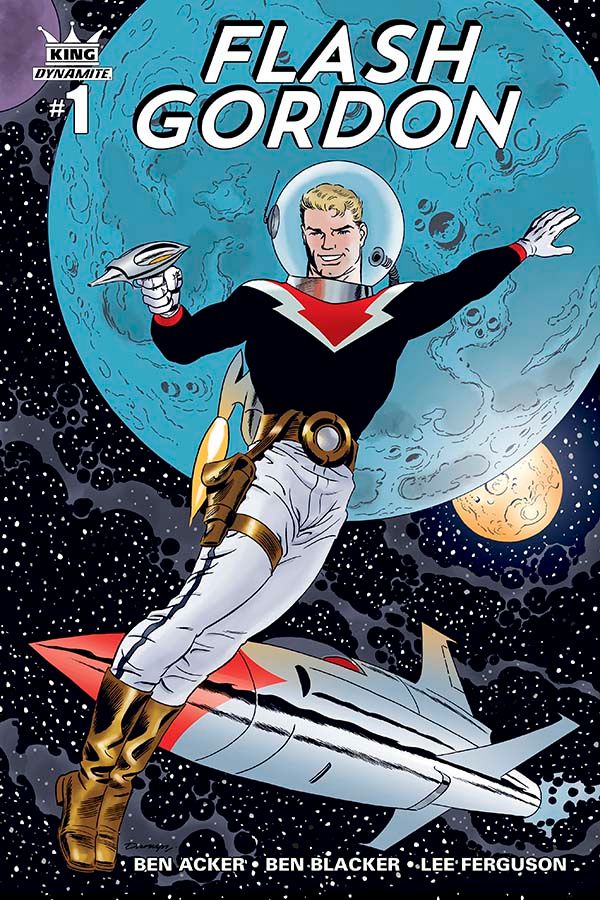"Thrilling Adventure Hour" co-creators Ben Acker and Ben Blacker set aside "King Coffee" and turn their focus to write "King: Flash Gordon" #1, a mostly-direct sequel from the recently completed "Flash Gordon" series by Jeff Parker and Doc Shaner. Joining the writing duo for this kickoff of Dynamite Entertainment's King Feature Syndicate 100th anniversary celebration is artist Lee Ferguson, colorist Omi Remalante, letterer Simon Bowland and editor Nate Cosby, who oversaw the aforementioned volume as well.
Acker and Blacker don't pour over every single detail about the origins of Flash Gordon's current status. They don't fill this comic with how he met his crew or why they are where they are when "King: Flash Gordon" #1 opens. Instead, Acker and Blacker make it quite easy for new readers to climb aboard. The audience is given the impression that they have walked in on the middle of something -- from the opening scene in Ming's throne room on Mongo to the private(ish) quarters where Flash Gordon wakes with a surprise and a bunch of questions.
Readers who have been in for the long haul are rewarded for their investment as the writers lift lines directly from the conclusion of "Flash Gordon" #8. Acker and Blacker make Gordon and pals their characters with an engagingly human fallibility that lures readers in and dynamic adventures certain to keep them around. While they don't quite give Gordon as much depth as their own creations, like Sparks Nevada or Frank and Sadie Doyle, Acker and Blacker do furnish Gordon, Dale Arden and Hans Zarkov with enough personality to carry the series. That trio doesn't have to carry the series, however, as the writers provide plenty of action to keep readers turning pages.
"King" Flash Gordon" #1 is good, light-hearted and enjoyable but, towards the end of the issue, the storytelling gets lost in Ferguson's artwork. The tables turn quickly on Flash Gordon, Dale Arden and Doctor Zarkov but the attack is not ideally constructed and the origins and identities of their foes are shadowy and murky, not in a mysterious way but a "What exactly happened?" way. Luckily, Acker, Blacker and Ferguson make it quite clear on the final page that this adventure did not completely end but simply hit a turning point.
Prior to that, Ferguson presents readers with a nice balance between Doc Shaner's work and a very heavy influence from the source material crafted by Alex Raymond. His characters are expressive and lively and the storytelling in the early half of the issue is fun and crisp, like Dale pulling her hair back as Flash tries to shake off a hangover. Bowland crafts the narrative and dialogue around the action and settings nicely, which is visibly easier in some panels over others, but his work is consistently on point throughout. Remalante's colors are bright, a nice carryover from Bellaire's work with the character, but in this issue there is a considerably larger number of textures and patterns in the place of backgrounds.
"King: Flash Gordon" #1 does not feel as complete as the recently-wrapped series from Parker, Shaner and Bellaire, but it also isn't impenetrable. This is a fun story, like an early episode of a "Thrilling Adventure Hour" storyline, so that readers can formulate their own understanding of the characters and the world those characters inhabit, but it hints to readers that the best is yet to come following a fun, mostly-solid start.

